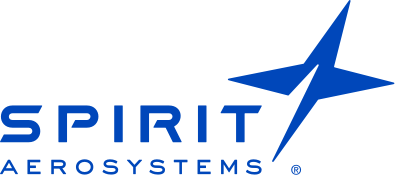

Spirit AeroSystems Reports First Quarter 2024 Results
First Quarter 2024
- Revenues of $1.7 billion
- EPS of $(5.31); Adjusted EPS* of $(3.93)
- Cash used in operations of $416 million; Free cash flow* usage of $444 million
- Currently engaged in discussions with Boeing on the possible acquisition of Spirit AeroSystems
Wichita, Kan., May 7, 2024 - Spirit AeroSystems Holdings, Inc. (NYSE: SPR) (“Spirit,” “Spirit AeroSystems” or the “Company”) reported first quarter 2024 financial results.

“The first quarter was characterized by several events, one of great significance was the partnership with Boeing to make improvements to the safety and quality of our production systems. We collaborated with Boeing to align 737 fuselage product inspection as close as possible to where the work is performed at our factories in Wichita. This is a significant accomplishment that we believe will enhance quality, eliminate rework, and benefit the entire production system between our companies,” said Pat Shanahan, President and Chief Executive Officer, Spirit AeroSystems.
Boeing 737 Update
As of March 1, 2024, Spirit and Boeing have performed joint product verification to ensure conformity prior to transportation to Renton final assembly. Consequently, Spirit’s deliveries to Boeing have been delayed and undelivered units have been built-up in Wichita, Kansas, resulting in higher levels of inventory and contract assets and lower operational cash flows.
During late 2023, the Company prepared for expected increases in production rates which have now been delayed. Spirit’s current Boeing 737 production rate is approximately 31 aircraft per month, which the Company anticipates remaining at through the end of this year. Spirit’s ability to align factory costs, which include both internal and supply chain related spending, and to react to sudden changes in production rates will have a material impact on results of operations and cash flows throughout 2024.
Revenue
Spirit’s revenue in the first quarter of 2024 increased from the same period of 2023, primarily due to higher production activities on Commercial programs and higher Defense and Space revenues. Overall deliveries decreased to 307 shipsets during the first quarter of 2024 compared to 346 shipsets in the same period of 2023.
Spirit’s backlog at the end of the first quarter of 2024 was approximately $49 billion, which includes work packages on all commercial platforms in the Airbus and Boeing backlog.
Earnings
Operating loss for the first quarter of 2024 was higher compared to the same period of 2023, primarily driven by the higher unfavorable changes in estimates during the current period. Additionally, the first quarter of 2024 was negatively impacted by Boeing’s schedule changes in March and the investigation and quality audits resulting from the Alaska Airlines incident.
Total change in estimates in the first quarter of 2024 included net forward losses of $495.4 million and unfavorable cumulative catch-up adjustments for periods prior to the first quarter of $39.2 million. Net forward losses were primarily driven by the Airbus A350 and A220 programs of $280.8 million and $167.0 million, respectively, due to the inability to reach a conclusion to pricing negotiations with Airbus, additional firm orders, and production cost growth. The forward losses on the Airbus A350 and A220 programs include net incremental losses for anticipated performance obligations beyond 2026 of $168.3 million in total. Additionally, the Boeing 787 program drove $34.1 million of forward losses, due to supply chain and labor cost growth. Unfavorable cumulative catch-up adjustments were primarily related to the Boeing 737 program, as discussed above. Excess capacity costs during the first quarter of 2024 were $26.1 million. In comparison, during the first quarter of 2023, Spirit recognized $110.0 million of net forward loss charges, $11.9 million of unfavorable cumulative catch-up adjustments and excess capacity costs of $43.3 million.
First quarter 2024 EPS was $(5.31) compared to $(2.68) in the same period of 2023. First quarter 2024 adjusted EPS* was $(3.93), which excludes the incremental deferred tax asset valuation allowance. In the same period of 2023, adjusted EPS* was $(1.69), which excluded the incremental deferred tax asset valuation allowance and pension termination charges. (Table 1)
Cash
Cash from operations and free cash flow* during the first quarter of 2024 were negatively impacted by the disruption to Boeing 737 production and delivery delays. Cash from operations and free cash flow* during the first quarter of 2023 reflects a $180 million surplus cash payment received related to the termination of Pension Value Plan A. The cash balance at the end of the first quarter of 2024 was $352 million. (Table 2)
Events in the first quarter of 2024 have resulted in significant reductions in projected revenue and cash flows this year. These recent events include the production and delivery process changes implemented by Boeing and lower than planned 737 production rates following the in-flight Alaska Airlines incident and the inability to reach a conclusion to pricing negotiations with Airbus. Management has developed plans to pursue various options to improve liquidity as needed and expects these plans will sufficiently improve the Company’s liquidity needs.

2024 Financial Outlook
Spirit will not be providing guidance until there is further clarity on the acquisition discussions with Boeing, 737 MAX delivery and production timing, as well as ongoing commercial negotiations with Airbus.
Subsequent Events
As described in the Form 8-K filed by the Company on April 23, 2024, on April 18, 2024, the Company entered into a Memorandum of Agreement with Boeing to provide $425.0 million of cash advances, based upon the Company maintaining a production rate that supports Boeing’s production demand in accordance with certain long-term supply agreements, which Spirit expects to receive in the second quarter of 2024.
Additionally, subsequent to the end of the first quarter, Spirit received indications that Boeing expects a slower increase in production and deliveries on the Boeing 787 program. While the Company has not received a formal schedule change, Spirit has completed a preliminary assessment relevant to the anticipated impact of this expected schedule change. As a result of this preliminary assessment, the Company expects to incur an incremental forward loss of approximately $50 to $60 million in the second quarter of 2024 due to reduced production volumes and the inability to reduce variable costs in a timely manner and the corresponding amount of fixed overhead absorption applied to lower deliveries. This preliminary assessment is subject to change if Boeing further revises its production and delivery plans.
Segment Results
Commercial
Commercial segment revenue in the first quarter of 2024 increased from the same period of the prior year, primarily due to higher production across most programs. Operating margin for the first quarter of 2024 decreased compared to the same period of 2023, primarily driven by higher changes in estimates as well as the results of the changes implemented on the product verification process in March. In the first quarter of 2024, change in estimates for the segment included $493.8 million of net forward losses and $38.9 million of unfavorable cumulative catch-up adjustments. Additionally, during the first quarter of 2024, the Commercial segment included excess capacity costs of $24.9 million. In comparison, during the first quarter of 2023, the segment recognized $109.9 million of net forward losses, $11.0 million of unfavorable cumulative catch-up adjustments and excess capacity costs of $40.9 million.
Defense & Space
Defense & Space segment revenue in the first quarter of 2024 increased from the same period of the prior year, primarily due to higher activity on development and classified programs as well as the Sikorsky CH-53K and FLRAA programs in the current period. Operating margin for the first quarter of 2024 increased compared to the same period of 2023, primarily due to higher activities on classified programs.
Aftermarket
Aftermarket segment revenue in the first quarter of 2024 increased slightly from the same period of the prior year, primarily due to higher spare part sales, partially offset by decreased maintenance, repair and overhaul (MRO) activity. Operating margin in the first quarter of 2024 decreased compared to the first quarter of 2023, primarily due to lower MRO activity during the current period.

Contact information:
Investor Relations: Ryan Avey (316) 523-7040
Media: Joe Buccino (915) 245-7888
On the web: http://www.spiritaero.com
Cautionary Statement Regarding Forward-Looking Statements
You should read the discussion of our financial condition and results of operations in conjunction with the unaudited condensed consolidated financial statements and the notes to the unaudited condensed consolidated financial statements appearing in the Company’s Annual Report on Form 10-K and the Company’s Quarterly Reports on Form 10-Q. The press release may include “forward-looking statements” within the meaning of Section 27A of the Securities Act of 1933 and Section 21E of the Securities Exchange Act of 1934. Forward-looking statements reflect our current expectations or forecasts of future events. Forward-looking statements generally can be identified by the use of forward-looking terminology such as “aim,” “anticipate,” “believe,” “could,” “continue,” “estimate,” “expect,” “forecast,” “goal,” “intend,” “may,” “might,” “model,” “objective,” “outlook,” “plan,” “potential,” “predict,” “project,” “seek,” “should,” “target,” “will,” “would,” and other similar words, or phrases, or the negative thereof, unless the context requires otherwise. These statements reflect management’s current views with respect to future events and are subject to risks and uncertainties, both known and unknown, including, but not limited to, those described in the “Risk Factors” section of the 2023 Form 10-K. Our actual results may vary materially from those anticipated in forward-looking statements. We caution investors not to place undue reliance on any forward-looking statements.
Important factors that could cause actual results to differ materially from those reflected in such forward-looking statements and that should be considered in evaluating our outlook include, but are not limited to, the following:
- the continued fragility of the global aerospace supply chain including our dependence on our suppliers, as well as the cost and availability of raw materials and purchased components, including increases in energy, freight, and other raw material costs as a result of inflation or continued global inflationary pressures;
- our ability and our suppliers’ ability and willingness to meet stringent delivery (including quality and timeliness) standards and accommodate changes in the build rates or model mix of aircraft under existing contractual commitments, including the ability or willingness to staff appropriately or expend capital for current production volumes and anticipated production volume increases;
- our ability to maintain continuing, uninterrupted production at our manufacturing facilities and our suppliers’ facilities;
- our ability, and our suppliers' ability, to attract and retain the skilled work force necessary for production and development in an extremely competitive market;
- the effect of economic conditions, including increases in interest rates and inflation, on the demand for our and our customers’ products and services, on the industries and markets in which we operate in the U.S. and globally, and on the global aerospace supply chain;
- the general effect of geopolitical conditions, including Russia’s invasion of Ukraine and the resultant sanctions being imposed in response to the conflict, including any trade and transport restrictions;
- the recent outbreak of war in Israel and the Gaza Strip and the potential for expansion of the conflict in the surrounding region, which may impact certain suppliers' ability to continue production or make timely deliveries of supplies required to produce and timely deliver our products, and may result in sanctions being imposed in response to the conflict, including trade and transport restrictions;
- our relationships with the unions representing many of our employees, including our ability to successfully negotiate new agreements, and avoid labor disputes and work stoppages with respect to our union employees;
- the impact of significant health events, such as pandemics, contagions or other public health emergencies (including the COVID-19 pandemic) or fear of such events, on the demand for our and our customers’ products and services, the industries and the markets in which we operate in the U.S. and globally;
- the timing and conditions surrounding the full worldwide return to service (including receiving the remaining regulatory approvals) of the B737 MAX, future demand for the aircraft, and any residual impacts of the B737 MAX grounding on production rates for the aircraft;
- our reliance on The Boeing Company (“Boeing”) and Airbus Group SE and its affiliates (collectively, “Airbus”) for a significant portion of our revenues;
- the business condition and liquidity of our customers and their ability to satisfy their contractual obligations to the Company;
- the certainty of our backlog, including the ability of customers to cancel or delay orders prior to shipment on short notice, and the potential impact of regulatory approvals of existing and derivative models;
- our ability to accurately estimate and manage performance, cost, margins, and revenue under our contracts, and the potential for additional forward losses on new and maturing programs;
- our accounting estimates for revenue and costs for our contracts and potential changes to those estimates;
- our ability to continue to grow and diversify our business, execute our growth strategy, and secure replacement programs, including our ability to enter into profitable supply arrangements with additional customers;
- the outcome of product warranty or defective product claims and the impact settlement of such claims may have on our accounting assumptions;
- competitive conditions in the markets in which we operate, including in-sourcing by commercial aerospace original equipment manufacturers;
- our ability to successfully negotiate, or re-negotiate, future pricing under our supply agreements with Boeing, Airbus and other customers;
- the possibility that our cash flows may not be adequate for our additional capital needs;
- any reduction in our credit ratings;
- our ability to access the capital or credit markets to fund our liquidity needs, and the costs and terms of any additional financing;
- our ability to avoid or recover from cyber or other security attacks and other operations disruptions;
- legislative or regulatory actions, both domestic and foreign, impacting our operations, including the effect of changes in tax laws and rates and our ability to accurately calculate and estimate the effect of such changes;
- spending by the U.S. and other governments on defense;
- pension plan assumptions and future contributions;
- the effectiveness of our internal control over financial reporting;
- the outcome or impact of ongoing or future litigation, arbitration, claims, and regulatory actions or investigations, including our exposure to potential product liability and warranty claims;
- adequacy of our insurance coverage;
- our ability to continue selling certain receivables through the receivables financing programs;
- our ability to effectively integrate recent acquisitions, along with other acquisitions we pursue, and generate synergies and other cost savings therefrom, while avoiding unexpected costs, charges, expenses, and adverse changes to business relationships and business disruptions; and
- the risks of doing business internationally, including fluctuations in foreign currency exchange rates, impositions of tariffs or embargoes, trade restrictions, compliance with foreign laws, and domestic and foreign government policies.
These factors are not exhaustive and it is not possible for us to predict all factors that could cause actual results to differ materially from those reflected in our forward-looking statements. These factors speak only as of the date hereof, and new factors may emerge or changes to the foregoing factors may occur that could impact our business. As with any projection or forecast, these statements are inherently susceptible to uncertainty and changes in circumstances. Except to the extent required by law, we undertake no obligation to, and expressly disclaim any obligation to, publicly update or revise any forward-looking statements, whether as a result of new information, future events, or otherwise. You should review carefully the section captioned “Risk Factors” in the 2023 Form 10-K and the Company’s subsequent Quarterly Reports on Form 10-Q for a more complete discussion of these and other factors that may affect our business.




Appendix
In addition to reporting our financial information using U.S. Generally Accepted Accounting Principles (GAAP), management believes that certain non-GAAP measures (which are indicated by * in this press release) provide investors with important perspectives into the company’s ongoing business performance. The non-GAAP measures we use in this press release are (i) adjusted diluted earnings (loss) per share and (ii) free cash flow, which are described further below. The Company does not intend for the information to be considered in isolation or as a substitute for the related GAAP measures. Other companies may define and calculate the measures differently than we do, limiting the usefulness of the measures for comparison with other companies.
Adjusted Diluted Earnings (Loss) Per Share. To provide additional transparency, we have disclosed non-GAAP adjusted diluted earnings (loss) per share (Adjusted EPS). This metric excludes various items that are not considered to be directly related to our operating performance. Management uses Adjusted EPS as a measure of business performance, and we believe this information is useful in providing period-to-period comparisons of our results. The most comparable GAAP measure is diluted earnings (loss) per share.
Free Cash Flow. Free Cash Flow is defined as GAAP cash provided by (used in) operating activities (also referred to herein as “cash from operations”), less capital expenditures for property, plant and equipment. Management believes Free Cash Flow provides investors with an important perspective on the cash available for stockholders, debt repayments including capital leases, and acquisitions after making the capital investments required to support ongoing business operations and long-term value creation. Free Cash Flow does not represent the residual cash flow available for discretionary expenditures as it excludes certain mandatory expenditures. The most comparable GAAP measure is cash provided by (used in) operating activities. Management uses Free Cash Flow as a measure to assess both business performance and overall liquidity.
The tables below provide reconciliations between the GAAP and non-GAAP measures.





